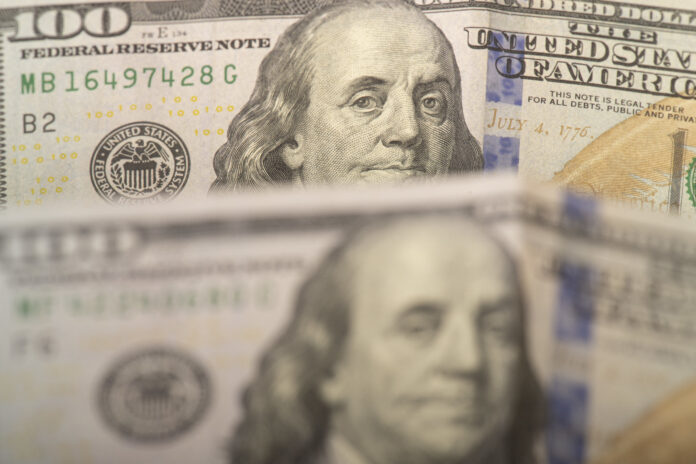The U.S. economy shrank from April through June for a second straight quarter, contracting at a 0.9 per cent annual pace and raising fears that the nation may be approaching a recession.
The decline that the Commerce Department reported Thursday in the gross domestic product — the broadest gauge of the economy — followed a 1.6 per cent annual drop from January through March. Consecutive quarters of falling GDP constitute one informal, though not definitive, indicator of a recession.
The report comes at a critical time. Consumers and businesses have been struggling under the weight of punishing inflation and higher borrowing costs. On Wednesday, the Federal Reserve raised its benchmark interest rate by a sizable three-quarters of a point for a second straight time in its push to conquer the worst inflation outbreak in four decades.
The Fed is hoping to achieve a notoriously difficult “soft landing”: An economic slowdown that manages to rein in rocketing prices without triggering a recession.
Fed Chair Jerome Powell and many economists have said that while the economy is showing some weakening, they doubt it’s in recession. Many of them point, in particular, to a still-robust labor market, with 11 million job openings and an uncommonly low 3.6 per cent unemployment rate, to suggest that a recession, if one does occur, is still a ways off.
Thursday’s first of three government estimates of GDP for the April-June quarter marks a drastic weakening from the 5.7 per cent growth the economy achieved last year. That was the fastest calendar-year expansion since 1984, reflecting how vigorously the economy roared back from the brief but brutal pandemic recession of 2020.
But since then, the combination of mounting prices and higher borrowing costs have taken a toll. The Labor Department’s consumer price index skyrocketed 9.1 per cent in June from a year earlier, a pace not matched since 1981. And despite widespread pay raises, prices are surging faster than wages. In June, average hourly earnings, after adjusting for inflation, slid 3.6 per cent from a year earlier, the 15th straight year-over-year drop.
The inflation surge and fear of a recession have eroded consumer confidence and stirred public anxiety about the economy, which is sending frustratingly mixed signals. And with the November midterm elections nearing, Americans’ discontent has diminished President Joe Biden’s public approval ratings and increased the likelihood that the Democrats will lose control of the House and Senate.
Trending Stories
Shopify’s big e-commerce bet failed. What does that signal for retail’s future?
Two men charged with first-degree murder in Ripudaman Singh Malik’s death
Consumer spending is still growing. But Americans are losing confidence: Their assessment of economic conditions six months from now has reached its lowest point since 2013, according to the Conference Board, a research group.
Recession risks have been growing as the Fed’s policymakers have pursued a campaign of rate hikes that will likely extend into 2023. The Fed’s hikes have already led to higher rates on credit cards and auto loans and to a doubling of the average rate on a 30-year fixed mortgage in the past year, to 5.5 per cent. Home sales, which are especially sensitive to interest rate changes, have tumbled.
Even with the economy recording a second straight quarter of negative GDP, many economists do not regard it as constituting a recession. The definition of recession that is most widely accepted is the one determined by the National Bureau of Economic Research, a group of economists whose Business Cycle Dating Committee defines a recession as “a significant decline in economic activity that is spread across the economy and lasts more than a few months.”
The committee assesses a range of factors before publicly declaring the death of an economic expansion and the birth of a recession — and it often does so well after the fact.
This week, Walmart, the nation’s largest retailer, lowered its profit outlook, saying that higher gas and food prices were forcing shoppers to spend less on many discretionary items, like new clothing.
Manufacturing is slowing, too. America’s factories have enjoyed 25 consecutive months of expansion, according to the Institute for Supply Management’s manufacturing index, though supply chain bottlenecks have made it hard for factories to fill orders.
But now, the factory boom is showing signs of strain. The ISM’s index dropped last month to its lowest level in two years. New orders declined. Factory hiring dropped for a second straight month.
How to prepare for a recession – Jul 7, 2022
© 2022 The Canadian Press



